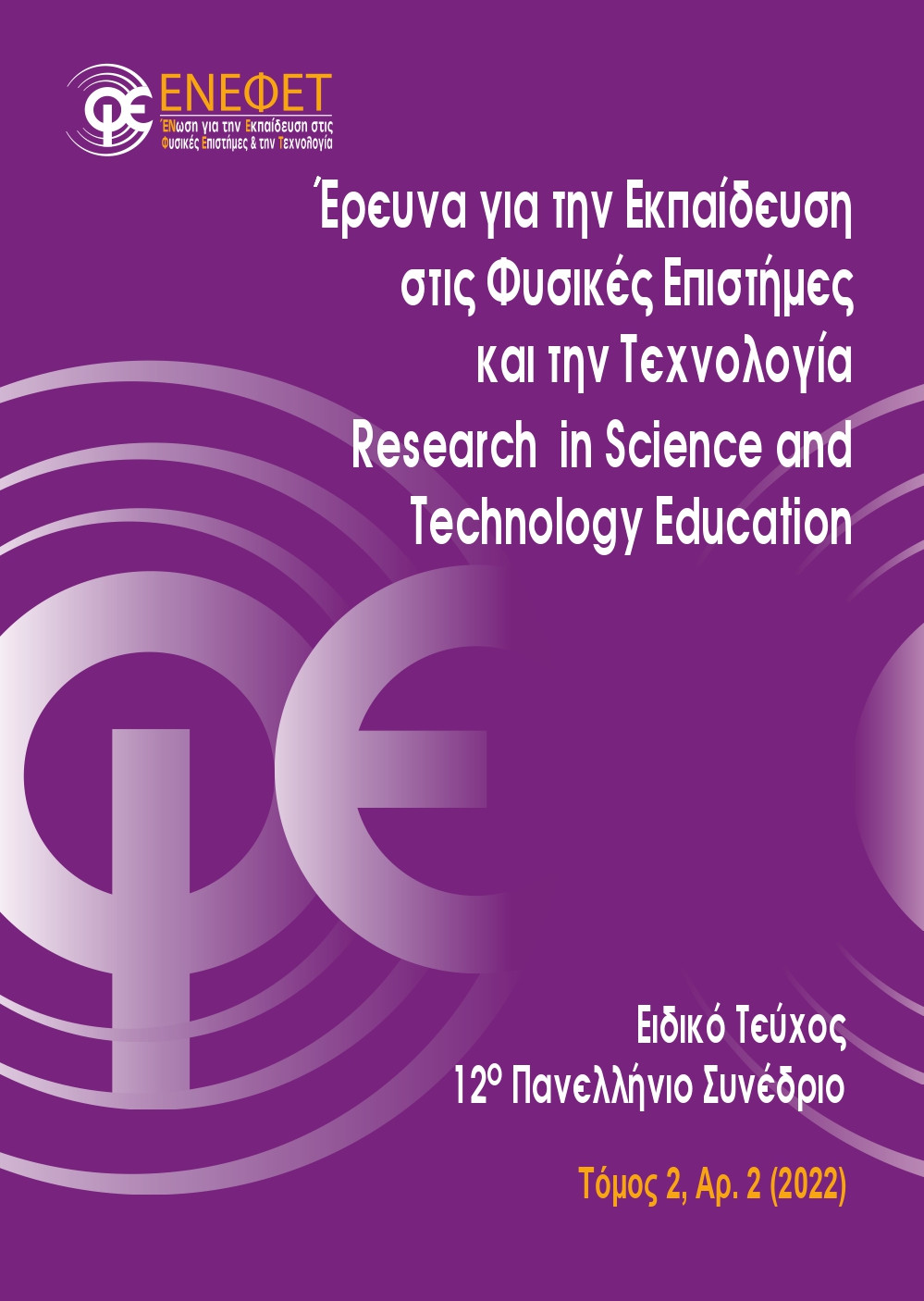Αναπτύσσοντας τις Ικανότητες των Μαθητών του Δημοτικού Σχολείου να Κρίνουν τα Αποδεικτικά Στοιχεία Επιχειρημάτων για τους Ηλεκτρομαγνήτες

Περίληψη
Παρόλο που πολλές έρευνες έχουν μελετήσει την ποιότητα των επιστημονικών επιχειρημάτων που παράγουν οι μαθητές, υπάρχουν ελάχιστες έρευνες που μελετούν την επίδραση διδακτικών παρεμβάσεων στην ικανότητα των μαθητών να κρίνουν τα αποδεικτικά στοιχεία επιστημονικών επιχειρημάτων. Η παρούσα εργασία εξετάζει την επίδραση μιας διδακτικής παρέμβασης στις ικανότητες των μαθητών της Στ΄ τάξης του δημοτικού σχολείου να κρίνουν τα αποδεικτικά στοιχεία επιχειρημάτων για τους ηλεκτρομαγνήτες. Αναπτύχθηκε εκπαιδευτικό υλικό για τους ηλεκτρομαγνήτες που βασίστηκε στη διδακτική προσέγγιση της «μάθησης μέσω πρακτικών», το οποίο εφαρμόστηκε σε 28 μαθητές της Στ΄ τάξης του δημοτικού σχολείου. Ως εργαλείο συλλογής των δεδομένων χρησιμοποιήθηκε ένα ερωτηματολόγιο, το οποίο συμπληρώθηκε από τους μαθητές πριν και μετά τη διδακτική παρέμβαση. Η ανάλυση των δεδομένων έδειξε ότι οι μαθητές, μετά τη διδακτική παρέμβαση, βελτίωσαν σημαντικά τις ικανότητές τους να εντοπίζουν αποδεικτικά στοιχεία σε επιχειρήματα, να αναγνωρίζουν τα αποδεικτικά στοιχεία που είναι αναγκαίο να περιλαμβάνονται στα επιχειρήματα, να κρίνουν αποδεικτικά στοιχεία, και να αξιολογούν επιχειρήματα με βάση τα αποδεικτικά τους στοιχεία.
Λεπτομέρειες άρθρου
- Πώς να δημιουργήσετε Αναφορές
-
Αλεξόπουλος Κ., Παρασκευοπούλου Μ., & Σκουμιός Μ. (2022). Αναπτύσσοντας τις Ικανότητες των Μαθητών του Δημοτικού Σχολείου να Κρίνουν τα Αποδεικτικά Στοιχεία Επιχειρημάτων για τους Ηλεκτρομαγνήτες. Έρευνα για την Εκπαίδευση στις Φυσικές Επιστήμες και την Τεχνολογία, 2(2). https://doi.org/10.12681/riste.30643
- Ενότητα
- Άρθρο Ερευνητικό
Οι συγγραφείς διατηρούν τα πνευματικά δικαιώματα και παρέχουν στο περιοδικό το δικαίωμα της πρώτης δημοσίευσης μαζί με την αδειοδότηση της εργασίας με CC-BY-NC-SA, που επιτρέπει σε άλλους να μοιράζονται αυτή την εργασία με αναγνώριση του συγγραφικού δικαιώματος και την αρχική δημοσίευση σε αυτό το περιοδικό.


